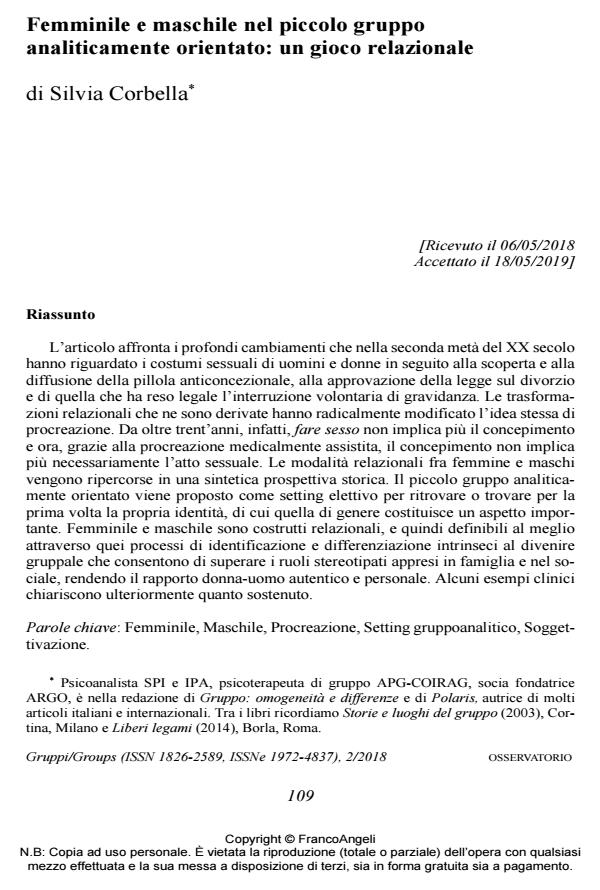Feminine and masculine in the small, analytically-oriented group: a relational play
Journal title GRUPPI
Author/s Silvia Corbella
Publishing Year 2019 Issue 2018/2
Language Italian Pages 19 P. 109-127 File size 209 KB
DOI 10.3280/GRU2018-002009
DOI is like a bar code for intellectual property: to have more infomation
click here
Below, you can see the article first page
If you want to buy this article in PDF format, you can do it, following the instructions to buy download credits

FrancoAngeli is member of Publishers International Linking Association, Inc (PILA), a not-for-profit association which run the CrossRef service enabling links to and from online scholarly content.
The article deals with the profound changes that affected the sexual habits of men and women in the second half of the 20th century following to the discovery and diffusion of the contraceptive pill, the approval of the law on divorce and the one that made voluntary termination of pregnancy legal . The resulting relational transformations have radically changed the very idea of procreation. In fact, for over 30 years, having sex has no longer implied conception and now, thanks to medically assisted procreation, conception does not necessarily imply a sexual act any longer. The relational modalities between men and women are retraced in a brief historical perspective. The author proposes the small analytically oriented group as an elective setting where to find - maybe for the very first time - one’s own identity, gender identity being an important aspect of it. Femininity and masculinity are relational constructs, therefore best defined through those processes of identification and differentiation intrinsic to becoming a group that allows overcoming the stereotypical roles shaped by family and society, making the woman-man relationship authentic and personal. Some clinical examples elucidate the author’s viewpoint.
Keywords: Feminine, Masculine, Procreation, Group Analytical Setting, Subjectivation.
Silvia Corbella, Femminile e maschile nel piccolo gruppo analiticamente orientato: un gioco relazionale in "GRUPPI" 2/2018, pp 109-127, DOI: 10.3280/GRU2018-002009